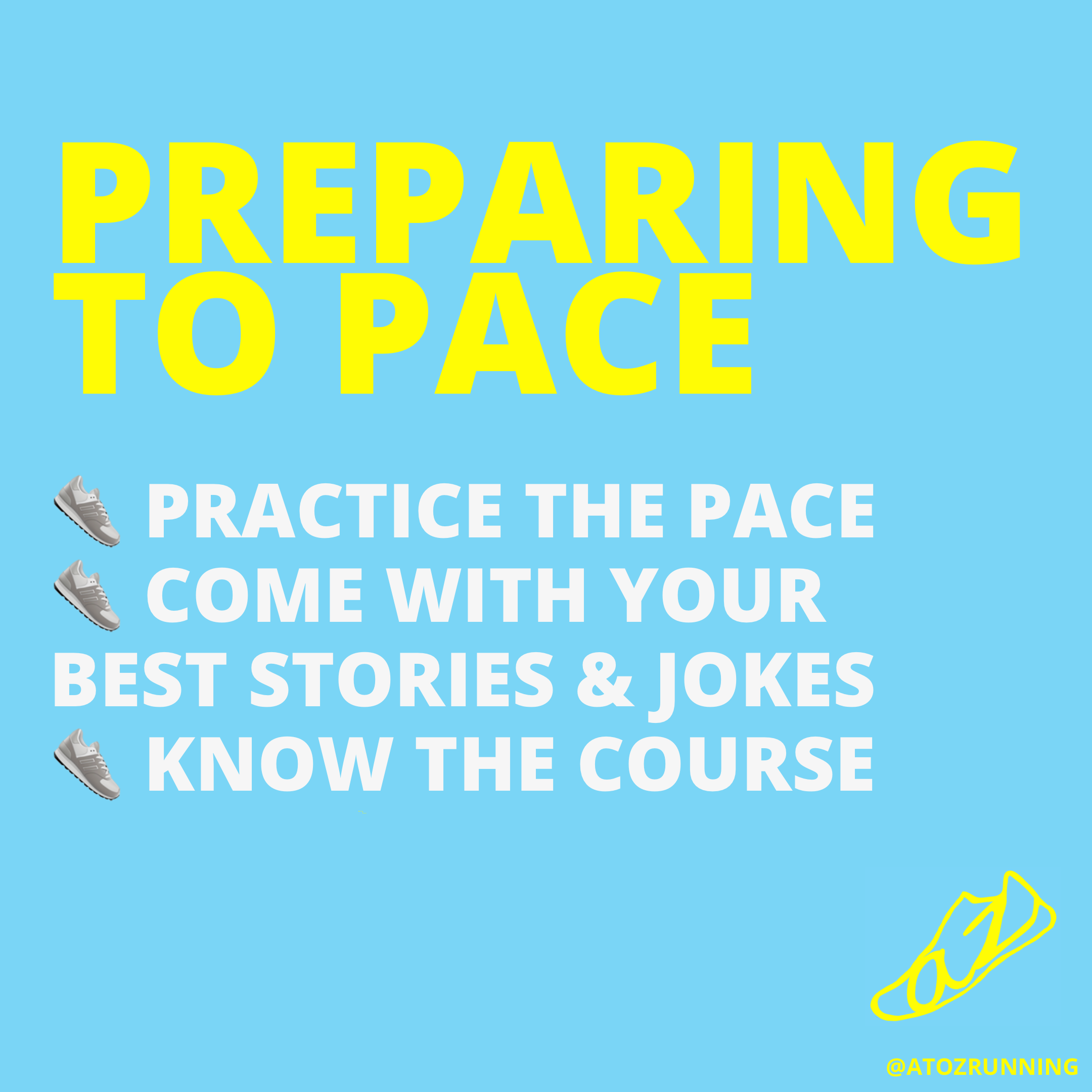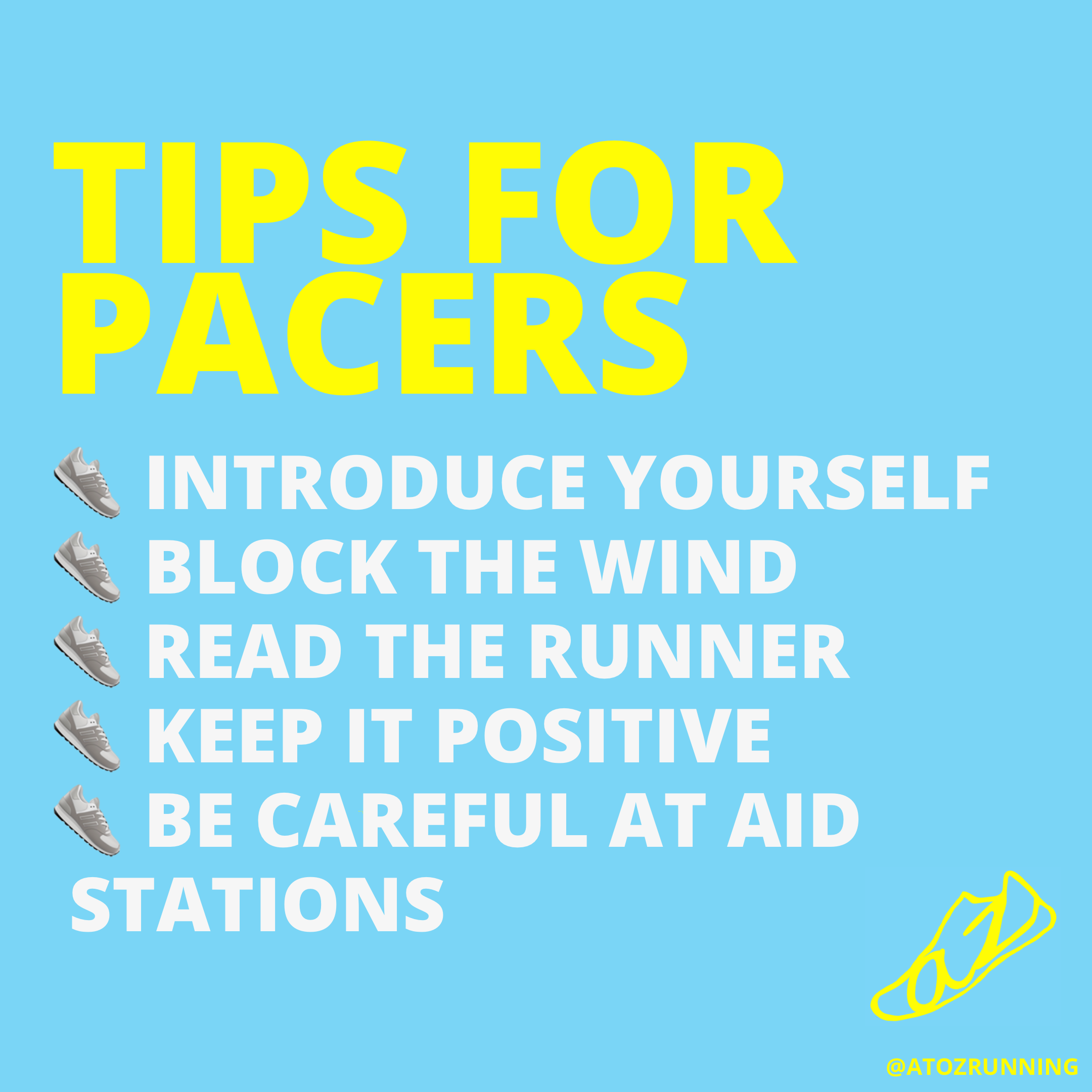Pacers around the world help runners reach their goals. This article will help you learn how to pace others in a race.Whether the pacer’s goal is to hit 12 minute pace or help with world record attempts, they help people realize their potential by taking the burden of pacing, wind, and mental strain. Have you ever considered becoming a pacer? Here are tips to help you help others.
help with world record attempts, they help people realize their potential by taking the burden of pacing, wind, and mental strain. Have you ever considered becoming a pacer? Here are tips to help you help others.
These tips were created in collaboration with podcast guest, Andrew Buikema on episode 77 of the A to Z Running Podcast. Tune in to hear more about pacing and some inspiring conversation that gets at the tremendous value pacers bring to the running community.
Preparing to Pace
Being a pacer is a big responsibility. There are ways to prepare yourself for the event. Treat your body like you are racing. Get proper sleep, nutrition, and prepare your body for the race. Also, prepare to carry the conversation. Pacing others in a race requires your A game.
- Practice the pace.
- Andrew Buikema suggests when pacing a marathon that the pace be about 1-2 minutes slower than your own race pace if you plan to pace to the completion of the event.
- Come with your best stories and jokes.
- Part of taking the mental load off for racers is keeping the conversation going in the race. For some like Andrew, it come naturally. For others, preparing race conversation will help keep the energy high with your pace group.
- Know the course.
- If you are in the group leading the race, this job is especially important. Even if your pace group will not be in the lead pack, it is still important to know the course in case a large separation happens between groups.
The point of this section, don’t wing it. Take the responsibility of pacing other runners seriously. Understand your role and prepare the details beforehand.
Tips for Pacers
As soon as the gun goes off, dial in to the pace you’ve practiced. There are a few tips to help you execute the race and pace effectively as you are pacing others in a race.
- Introduce yourself as the pacer.
- Let the group know that you are there to help. Start an open line of communication so they feel comfortable asking you questions.
- Block the wind.
- One of the main advantages for runners with pacers is that they do not have to take the force of the wind. Make sure that you allow them to tuck behind you, even if your preference would be side-by-side to chat with or encourage them.
- Read the runner.
- Runners respond to things very differently. Try to read the group. Andrew suggests making the conversation relevant to your group.
- If the runner is breathing heavily, do not ask them a ton of questions. Do most of the talking.
- Keep it positive.
- Speaking of doing the talking, keep it light. The conversation should stay positive and upbeat. You may even want to prepare some stories to share so that the conversation isn’t left to chance.
- Be careful at aid stations.
- The last thing you want to do when trying to help a person reach their goal is to block them from their nutrition or aid. Keep a careful eye so you don’t unintentionally cause a hiccup at the aid station.






I’d like to say thanks for the pacer tips. I’ll be pacing my first event soon and these suggestions are very helpful.
Enjoy the fall!!
I am so glad you found them helpful! Good luck at your first pacing event!